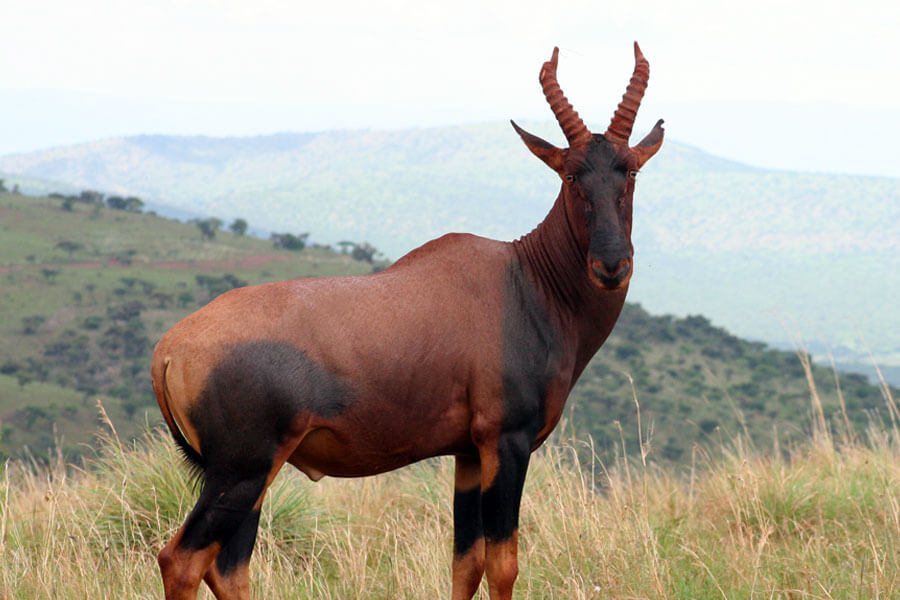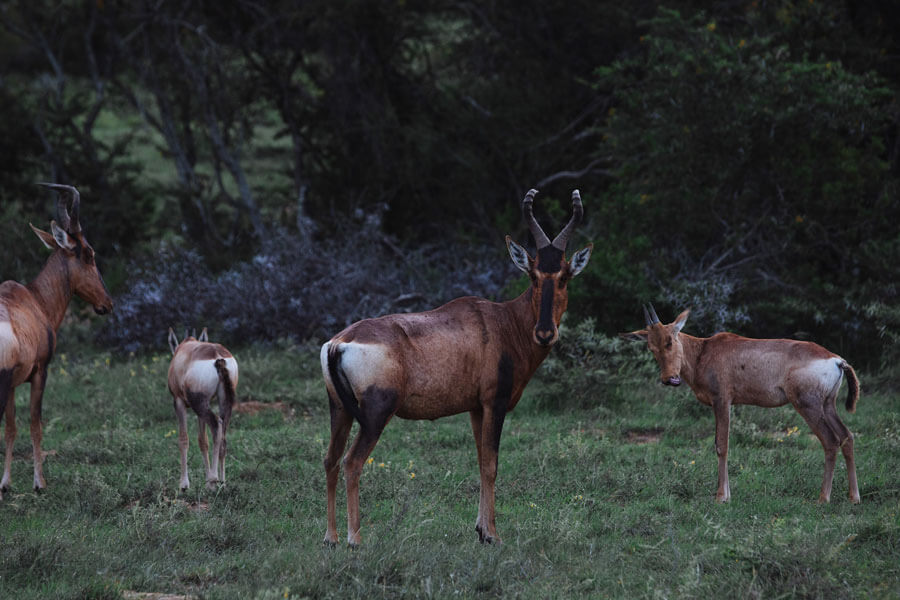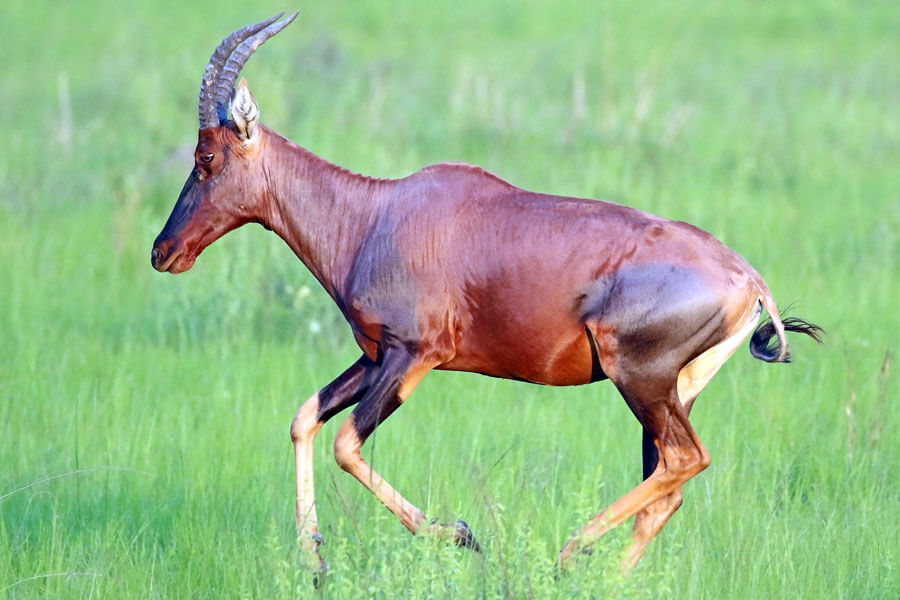In the wild plains of Africa, the topi antelope reigns supreme. With lightning-fast speed and a clever mind, it escapes predators by leaping through the grasslands.
In tightly-knit herds, they establish a social order, where dominant males fight for mating rights. As skilled grazers, they shape the landscape, maintaining the delicate balance of the ecosystem.
In this article, we will explore everything about the topi antelope: how it looks, where it lives, what it eats, how it reproduces, the dangers it faces, and why it is so important for the African ecosystem.
Facts About Topi Antelopes
1. Physical Description

The topi antelope is a medium-sized antelope with a slender yet robust build. They stand at an average shoulder height of around 3.5 to 4.5 feet and measure about 6.5 to 7.5 feet in length.
Both male and female topis possess impressive curved horns, with those of males being bigger. A male topi's horns can reach lengths of up to 24 inches.
The topi's colour is different depending on age and sex, but they are generally a deep reddish-brown, with lighter patches on the face, throat, and underbelly.
2. Topi Habitat
Topi antelopes are most commonly found in the open savannahs of East Africa - in countries such as Kenya, Tanzania, and Uganda. They are well adapted to the unforgiving habitat, as they sometimes have to move long distances for food and water - especially in the dry seasons.
In general, topis avoid dense forests and prefer areas with a mix of tall grasses and scattered shrubs.
3. Diet & Eating Habits
As grazers, topi antelopes have a specialized diet consisting mainly of grasses. They feed on a variety of grass species, selecting the most nutritious portions and avoiding coarse or less desirable vegetation.
While they like grass, topis are quite adaptable. During the dry season, when fresh grasses are scarce, they may resort to browsing on leaves and herbs.
This flexible feeding behaviour allows them to easily adapt to the conditions in their local ecosystem.
4. Social Structure
Topi antelopes are very social animals and form large herds that can consist of hundreds. Each herd has a clear structure of leadership with the dominant males at the top.
It is the duty of the dominant males (territorial bulls) to defend their territory from other rival males. This can be done in several ways including vocalisations or fights - whatever it takes to keep the territory.
Within the herd, females and their young often form a more cohesive bond with each other.

5. Reproduction
Breeding among topi antelopes is seasonal and often occurs during the rainy season months. This is when there are a lot of resources in terms of food and water.
To attract females, the male topis will engage in various displays, usually accompanied by interesting leaps known as "pronking".
The female topi undergoes a pregnancy of around 8 months which ends with giving birth to a single calf. The newborn topi calf can stand and walk soon after birth and it joins a 'nursery' group of other young ones where they get cared for by the adult females of the herd.
6. Threats
The topi antelope is faced with many challenges and threats in the wild. The biggest threat is habitat loss (shrinkage) which is a result of human activity and population growth. Furthermore, poaching and climate change pose an immediate and future threat to the survival of topi antelopes in the wild.
While governments have laws and regulations in place to protect the natural ecosystems where topis live freely, these threats are not fully mitigated yet due to a variety of specific factors such as political instability, underdeveloped tourism, limited resources and much more.

Beyond the outside threats, topis are also preyed upon by various predators. Large carnivores such as lions, leopards, hyenas, cheetahs and African wild dogs hunt and kill topis for food. This is the natural way of the wilderness but as the balance of the natural ecosystems keeps changing, predation influences the population dynamics.
7. Conservation Of Topis
The efforts to conserve topi antelopes focus mainly on protecting their habitats and addressing the underlying pressures to protect these natural ecosystems. The establishment of protected areas such as national parks, game reserves and national reserves has helped ensure the survival of topi populations in the wild.
In some areas, collaborative initiatives that involve the local communities, government bodies, conservation organizations and tourism have promoted a sustainable outlook on protecting the wild places where this graceful antelope and many other animals live.
8. Significance In The Ecosystem
Topi antelopes play a vital role in the African ecosystem as both grazers and prey species. Their selective grazing helps maintain the balance of grassland vegetation, contributing to the overall health and diversity of the ecosystem.
Finally, they serve as an important food source for predators such as lions, cheetahs, and hyenas, shaping the intricate web of interactions within the savannah ecosystem.
Final Thoughts
In conclusion, the topi antelope showcases the world of resilience and interconnectedness in the African savannahs. By understanding its lightning-fast escapes, intricate social dynamics, and vital role in the ecosystem, we gain a deeper appreciation for nature's wonders.
It is through our knowledge and actions that we hold the power to protect and preserve these graceful beings and their wild habitats.
By learning about topi antelopes, we become part of a greater narrative of understanding and respect for the natural world. Let us take pride in our newfound knowledge and inspire others to appreciate the intricate balance of life.
Together, we can ensure a brighter future where topi antelopes continue to thrive, symbolizing the enduring spirit of resilience and harmony in nature.
